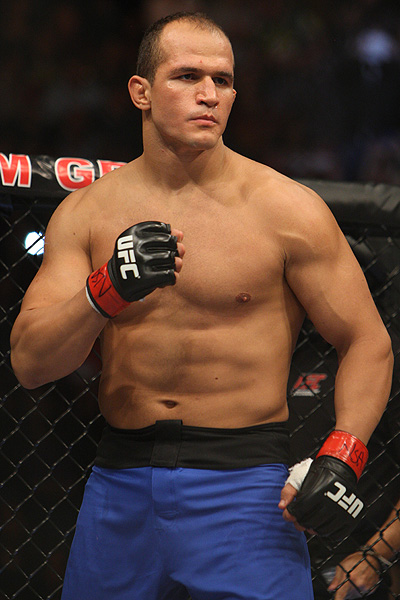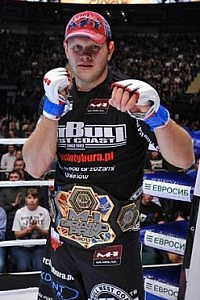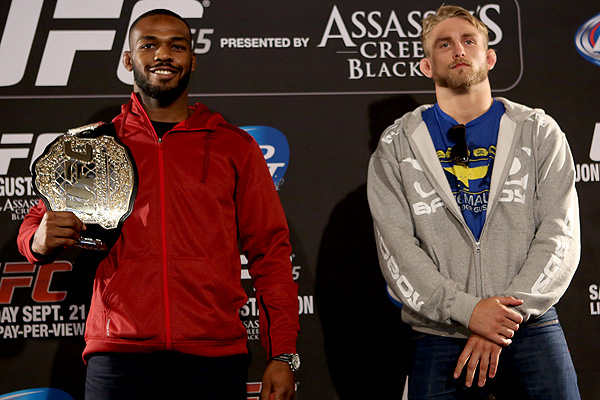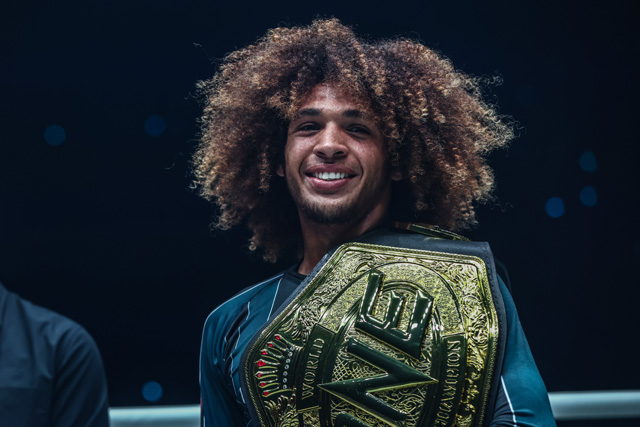The Murky Future of the Heavyweight Division
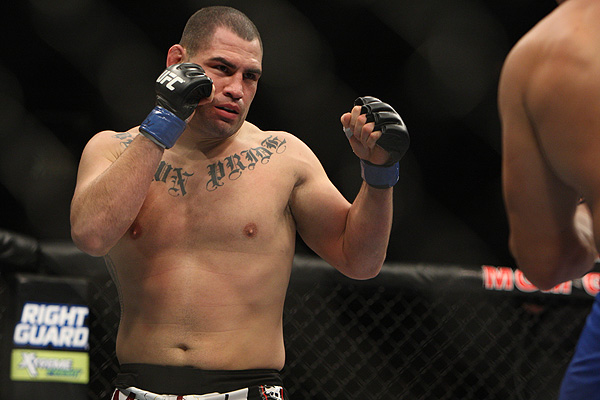
Cain
Velasquez, 32, rules the heavyweight division. | Photo: Dave
Mandel/Sherdog.com
Heavyweight MMA has what political pundits might label an upcoming demographic problem. In short, the heavyweight division is packed almost exclusively with older fighters and past history suggests they are unlikely to get any younger.
Of Sherdog’s top 10 heavyweights, none is under the age of 30. The average age is 34.8 years old, and the only fighter under the age of 29 to get consideration for the top 10 is former Bellator MMA champion Alexander Volkov (26). Most of these fighters are likely to have already reached the peak of their respective careers.
Advertisement
Related: UFC on Fox 13 Preview
Even the Ultimate Fighting Championship heavyweights thought to be up-and-coming forces tend to be deceptively old, like 29-year-old Todd Duffee, 28-year-old Ruslan Magomedov and 29-year-old Derrick Lewis. Stipe Miocic and Matt Mitrione are on the career ascent, but Miocic has already reached 32 and Mitrione, who got started late, is 36. Stefan Struve, at 26, is one of the few heavyweights under 30 to have fought against upper-echelon competition, but a heart condition raises doubts about his long-term future in the sport.
Some clarity will be offered in this turbulent division at UFC on Fox 13 this Saturday at the US Airways Center in Phoenix. There, we will see how Junior dos Santos recovers from his trilogy loss to heavyweight champion Cain Velasquez, if Alistair Overeem and Gabriel Gonzaga can still compete at the top level and whether Miocic, Struve and Mitrione are ready to jump into a higher class. It is one of the most significant nights for heavyweight MMA in a while, but regardless of what happens in those fights, questions still linger about the future of the heavyweight division.
Why are almost all of the the top fighters on the older side and
what does it portend for the years ahead?
To begin with, it is worth noting that the heavyweight division in combat sports is always one that is better suited to older fighters. Unlike lighter-weight divisions where speed is king and older fighters can fall off a cliff when that speed begins to go, power is crucial to larger fighters and tends to stick around longer. Some trainers have also argued that larger fighters take more time than smaller fighters to fully develop their reflexes and techniques.
George Foreman and Randy Couture are likely the two most famous examples of older heavyweights defying Father Time in boxing and MMA, but plenty of fighters have thrived even into their 40s. Of the 21 UFC heavyweight or interim heavyweight championship runs, 12 of them -- 57 percent -- started when the champion was already north of 30. Those fighters have often emerged later than their counterparts in the lighter weight classes. To show the contrast, Sean Sherk is the only person at lightweight or below to capture a UFC title after his or her 30th birthday. He represents just eight percent of the championship population there.
If, however, some heavyweights may be due for a surge in their 30s, a pesky question remains. Where exactly are those fighters now? One would expect a cadre of raw prospects out there who are still a while away, but that is not the case. Sherdog’s Prospect Watch has few heavyweight equivalents for Bubba Jenkins, Sergio Pettis or Andre Fili. Marcin Tybura, widely regarded as the division’s premier prospect, turned 29 on Nov. 9.
It is true that raw prospects by their very nature tend to be less known, but it is not as if young heavyweights cannot attract attention. Eight years ago, there was a buzz out of the American Kickboxing Academy camp that it had something special on its hands in the form of a young heavyweight who nobody wanted to fight. We now see what Velasquez has become.
One way to locate this missing next generation of heavyweight MMA stars might be to look down. That is because the best heavyweight fighters in their 20s today compete at 205 pounds. Jon Jones and Alexander Gustafsson, both 27, have the size and skill to thrive at heavyweight if they so choose.
They might not be as dominant as they are at light heavyweight, but they would do plenty well. Both have bigger frames than most of MMA’s all-time best heavyweights.
The fact that fighters like Jones and Gustafsson do not compete at heavyweight speaks to both emerging trends in the sport and lasting realities. Weight cutting has become more and more prevalent, with fighters looking to gain every competitive advantage. If featherweights can cut down from 170 pounds, cutting down from the normal heavyweight range to 205 pounds is no big deal. Most successful heavyweights do not reach the upper limits of the weight class, so the light heavyweight division is drawing from fighters who could compete well at heavyweight.
MMA also provides less motivation to move up than other combat sports like boxing. There was always an extra prestige to boxing’s heavyweight division and the promise of bigger paychecks lured lighter-weight fighters like Evander Holyfield to move up. By contrast, the light heavyweight division has been American MMA’s glamor division more often than not.
Tito Ortiz and Chuck Liddell were drawing the sport’s biggest buy rates, while Tim Sylvia and Andrei Arlovski were afterthoughts. From Frank Shamrock and Quinton Jackson to Lyoto Machida and the aforementioned Jones, many of the sport’s most recognizable fighters have competed at 205 pounds. The entrance of Brock Lesnar changed that dynamic for a time, but today’s light heavyweight division is certainly no less prestigious than the heavyweight class.
As Jones, Gustafsson and other light heavyweights get older, they could grow tired of the weight cuts and move up. Jones eventually challenging for the heavyweight title would make for a great story and a great attraction, but that is certainly no guarantee if he calculates the move would put him at a competitive disadvantage.
If the heavyweight division does not add some elite light heavyweights and a few high-quality young prospects do not emerge, there could be tough times ahead as the late 30s contingent trickles out. Travis Browne looks like he could be developing into a dominant force, but he is the exception rather than the rule; and he will turn 33 in July.
It is easy to think that invariably some fighters will emerge, but that is no guarantee. Boxing’s heavyweight division has collapsed beyond the dominant Klitschkos, and K-1’s well of standout heavyweight kickboxers eventually ran dry. It is one thing to continually regenerate new fighters at 170 pounds or 155 pounds, very common weights. It becomes harder on the fringes. That goes for natural heavyweights; one can also look at the UFC’s flyweight division, woefully thin beyond the great Demetrious Johnson and a small handful of others.
MMA also will always have a recruitment problem for elite athletes at heavyweight as compared to other weight classes. With the money and prestige, large top-flight athletes in the United States will tend to devote themselves towards other sports like basketball and football. Smaller athletes do not have the same big-money options. It is not a coincidence that former football players like Mitrione and Brendan Schaub have used their athleticism to do quite well in MMA despite not being elite athletes by NFL standards.
If there is a positive to the older skew of MMA’s heavyweight division these days, it is the ability to watch longtime favorites compete in important fights. No other division has so many connections to the glory days of Pride Fighting Championships. Few heavyweights seem in jeopardy of being rudely and brutally ushered off the stage at just 35 like B.J. Penn was in the final stages of his career. There is still plenty of enjoyment that can be derived from watching MMA’s big men today, even if the future of the division remains murky.
Related Articles




